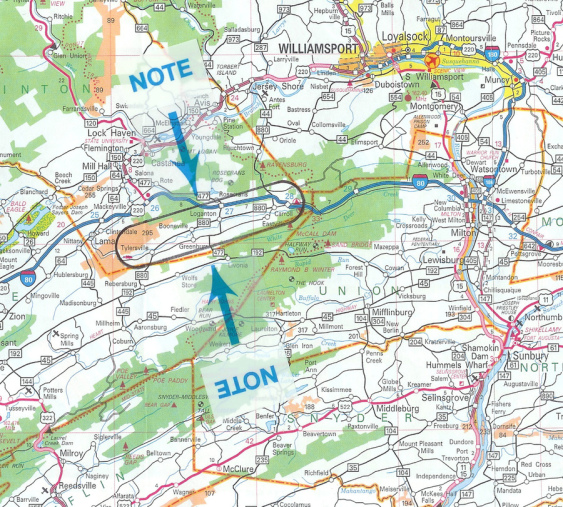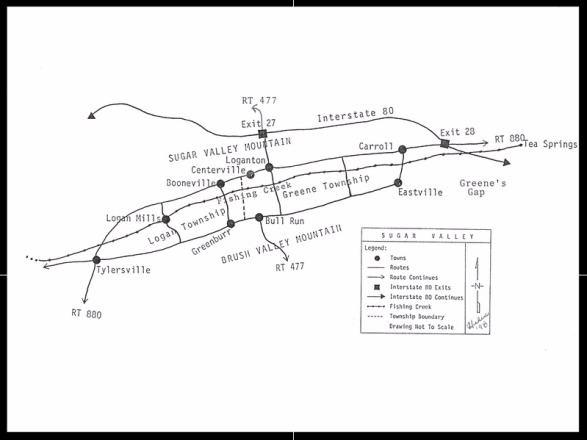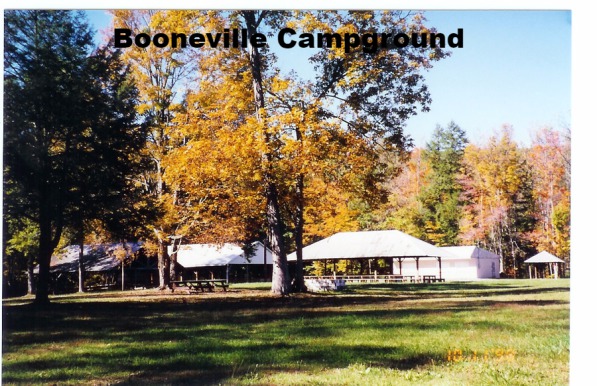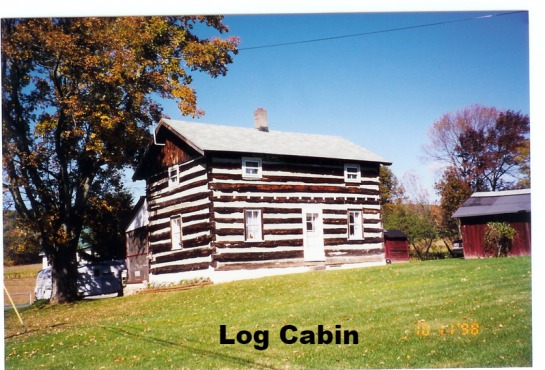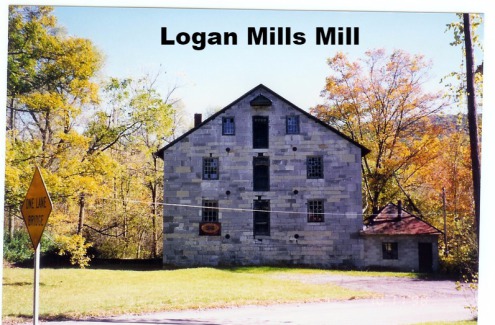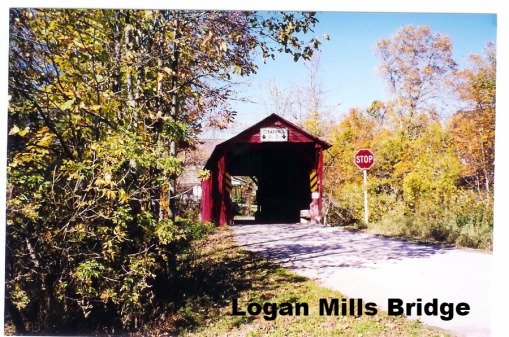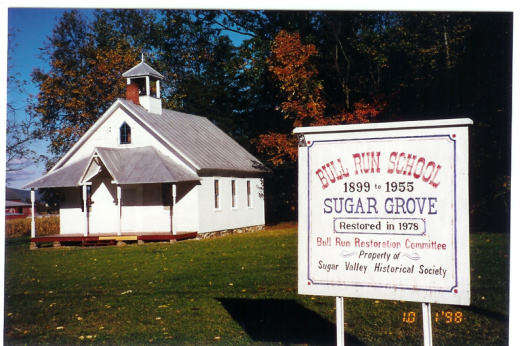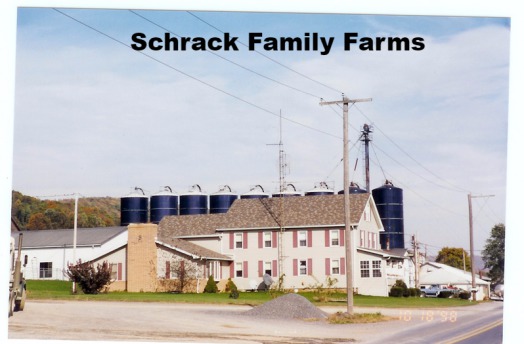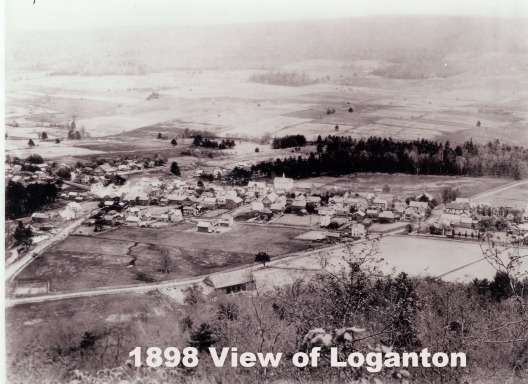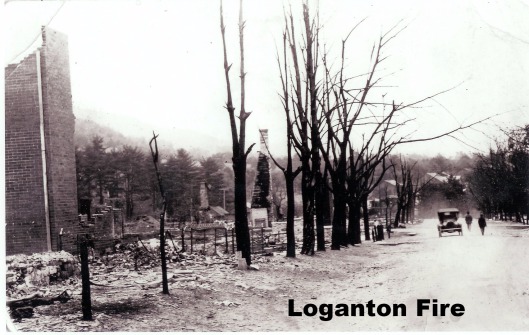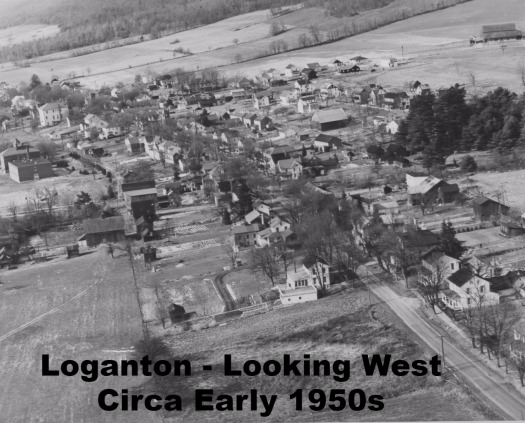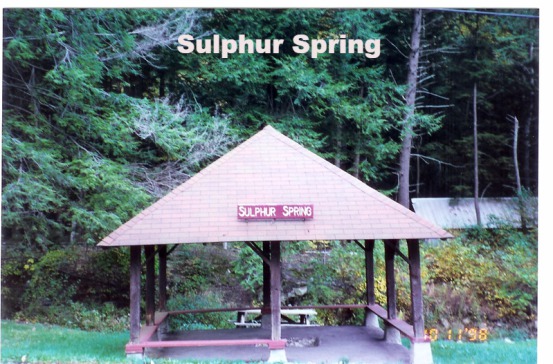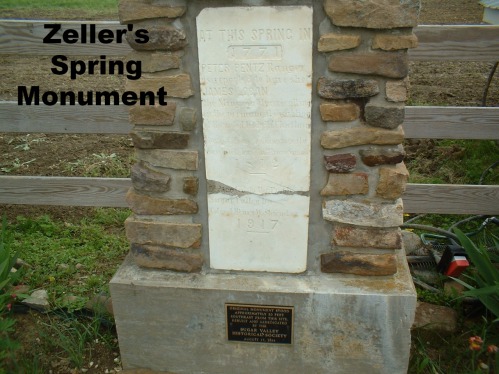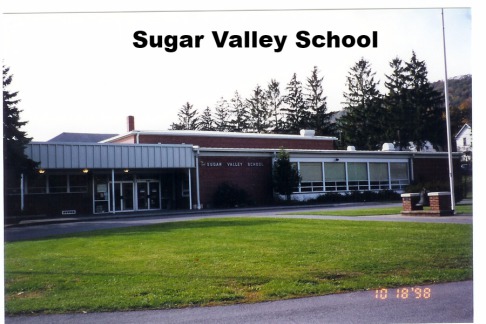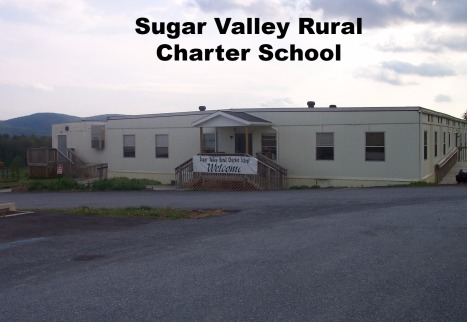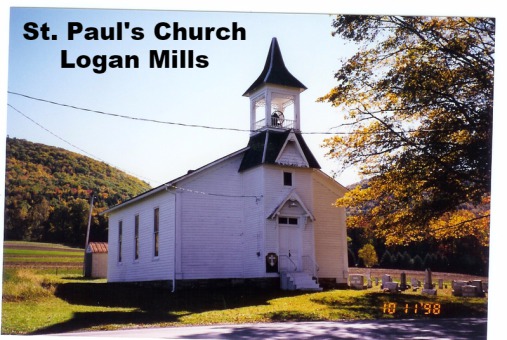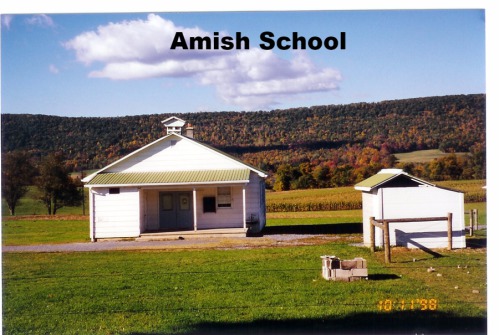Sugar Valley Overview And Its Current Contributions
By: Helen E. Imes
Written: December 14, 1998
Updated: June 13, 2015
INTRODUCTION
Sugar Valley was the last settled, central Pennsylvania valley. It is located in southern Clinton County. It is approximately 20 miles in length and 2 miles in width. The valley lies between Sugar Valley Mountain on the north and Brush Valley Mountain on the south. The enclosing sandstone mountains slope to the limestone floor of the valley creating a very beautiful and relatively isolated canoe-shaped valley. Sugar Valley was named for the abundance and size of sugar maple trees.
Two roads traverse the full length of the valley; the road that follows the base of Sugar Valley Mountain is locally known as the "summer road," now referred to as East and West Valley Road. The other road which follows the base of Brush Valley Mountain is locally known as the "winter road," now referred to as East and West Winter Road. The "summer" and "winter" expressions are due to the fact that the snow melts first on the north side of the valley because it is exposed to the winter sun.
Fishing Creek begins at the eastern end of Sugar Valley east of Tea Springs and flows westerly the entire length of the valley. The creek empties into the Susquehanna River and eventually the Chesapeake Bay.
Tea Springs was once a CCC camp. The Pennsylvania Department of Conservation and Natural Resources maintains the forested area as a picnic area. A stone marker is soon to be placed in the area designating the CCC camp. Stone markers will also mark the site of two other CCC camps in Sugar Valley; one on Harbach Road on the Carroll mountain and the other at the CCC camp west of Rosecrans.
SUGAR VALLEY TOWNSHIPS AND TOWNS
Sugar Valley is comprised of two townships, Logan Township and Greene Township. From these townships, ten villages grew. Their background namesakes and contributions are discussed in the following paragraphs.
Logan Township was named for Indian Chief Logan. It appears on the list of townships in April 1819. What is now Logan Township was originally included in Miles Township, Centre County, and was organized previous to the formation of Clinton County in 1839. At that time it contained the territory which today encompasses both Logan and Greene Townships. The record of its erection cannot be found, but it was bounded on the north by Lamar Township, eastwardly by the Lycoming County line, south by Nittany Mountain, west by Miles and Walker Townships, and embraced the present township of Greene, in Clinton, and all of what is known as Sugar Valley.
Throughout Logan Township's history, five villages developed which contributed to its growth: Booneville, Greenburr, Logan Mills, Toughtown, and Tylersville.
John and Ralph Boone laid out Booneville in 1866. The two men named the village after themselves.
The Booneville Campground is located just south of Booneville on the road to Greenburr. It has been the tradition that on the third Saturday in August the Sugar Valley population gathers for a community picnic. This year the community picnic marks it 99th anniversary.
An old log home is located just beyond the Booneville Campground on the other side of the road. It is currently owned by Glenn Smith of Loganton. Its original appearance has changed very little. Many of the homes in the valley are constructed like this but are covered with vinyl siding.
Greenburr, originally known as Greenville, was named for its location among an abundance of green trees in its vicinity. Although Greenburr was once comprised of a post office, a school, and two churches, today only one active church remains and no commercial development.
Colonel Anthony Kleckner established Logan Mills. Colonel Kleckner named the town after Chief Logan.
Logan Mills is also the site of a stone gristmill built in 1840 by Colonel Anthony Kleckner. When Colonel Kleckner died in 1860, it was purchased by the Ilgen family and was in operation until the mid-1950s. New owners, Glenn Vernon and Claudia Albertin, have purchased and the mill and some surrounding buildings and are refurbishing them for historical purposes.
Logan Mills is the site of the only remaining covered bridge in Clinton County. The 45-foot bridge was constructed in 1874. It was placed on the National Register of Historic Places in September 1979. It was renovated in 2002 and dedicated in 2003.
Toughtown is located between Greenburr and Tylersville on West Winter Road. It was originally called Schreckengast Town after the residents who lived in the area. Today, the community refers to the village as Toughtown and houses approximately 15 homes. It was so named because it is said that: "The farther west you go, the tougher they are."
Tylersville was founded by Squire M.D. Rockey in 1842. He named the village for John Tyler, then President of the United States. Of the five Logan Township villages, Tylersville was the most prosperous, probably due to its greater industrial base. Today, Tylersville retains its standing as the largest of the villages in Logan Township. Although no historical industry remains, Tylersville retains one church, the only active grange in the valley, and is the site of a U.S. Federal Fish Hatchery. The Tylersville post office closed its doors on December 31, 2006.
Greene Township was formed in 1840 out of Logan Township. It was named for Captain Harry Greene of Milton and six of his companions who were killed in February 1801 at the eastern end of Sugar Valley in pursuit of a band of Indians who were burning buildings and stealing cattle throughout the West Branch and Juniata Valleys. This was the last Indian massacre in Pennsylvania.
A marker commemorating Captain Green was erected in 1916 and was located at the eastern end of the valley off Interstate 80, Exit 192 (old Exit 28) at the Pit Stop gas station.
Throughout the history of Greene Township, six villages and one borough were established which contributed to its growth: Bull Run, Carroll, Centerville, Eastville, Loganton, and Rosecrans.
Bull Run was originally called Sugar Grove because of the abundance of sugar maple trees in the area. It is now traditionally called Bull Run because of the location being near Bull Run Stream.
This small village houses the only remaining one-room school in Clinton County, It was constructed in 1899 and served pupils of Greene Township until it closed in 1955. It was restored as a Bicentennial project, and dedicated as a site of historical interest in June 1976. All the original equipment, including double desks, the schoolmaster's desk, recitation benches, a Waterbury school clock, and the bell in the belfry, are intact. The school was purchased from Keystone Central School District in 1996 for $1.00.
In April 2011, the Sugar Valley Historical Society began construction of a museum beside the Bull Run School. The dedication was held on July 21, 2012. The museum currently houses over 1,200 items in its inventory.
Carroll was named after William Carroll who operated a furnace in the area when the valley was being settled. Carroll is located just off Interstate 80 at Exit 192 (old Exit 28). The entire historical commercial past is gone from this town. Two gas stations serve travelers off Interstate 80 and Scaff Enterprises, Inc. is in operation. An Interstate 80 rest area is located east of the Carroll exit.
Centerville was named because of its central location in the valley. An Amish Harness Shop and General Store was established in Centerville in 1974. The store moved to the northern part of Loganton near the gap and is known as Kauffman's Store with an address of 22 Meadow Lane.
Centerville is more commonly known today as Schracktown because the Schrack family owns most of the land farmed in the area. The Schrack Farm can be distinguished from the other farms in the area by its nine blue silos. In August 1977, the farm was designated a Pennsylvania Century Farm by the Pennsylvania Department of Agriculture, meaning it has been in the same family for 100 years or more. It is the oldest of five Century Farms in Clinton County.
Eastville derived its name from its location at the eastern end of Sugar Valley, but at one time was called Princetown. By the end of the 1800s, fourteen dwellings, three saw mills, one blacksmith shop, one church, an one school were in existence. When this overview was first written in 1998, all indications of the commercial past were gone, except for one church and a cluster of homes. Today, the church, the cluster of homes still exist with additions of a one-room Amish School, hydraulic shop, Dancing Bear Lodge, and of course, we cannot forget Nancy Byler's famous donuts.
Loganton, the largest town and most commercialized in the valley, was originally Alpine, then called Logansville and derived its name from Shikellemy's son, James Logan. The town is completed surrounded by Greene Township. It was laid out in 1840 and incorporated as a borough in 1864. The name change occurred by court action of the postal service on February 29, 1888 because a town in York County had the same name.
On Wednesday, June 20, 1918, Loganton experienced a disastrous fire. No lives were lost, but approximately three-fourths of the borough was destroyed (two churches, 41 homes and businesses, 32 stables and barns). Every business was destroyed except the bank. The fire started from a defective flue in the DeLong Bakery. The lost was estimated at $500,000. Since the fire, the borough has been rebuilt but not to the extent before the fire.
Rosecrans lies in Greene Township on a highland plateau north of Sugar Valley Mountain and south of Nittany and Bald Eagle Mountains. This mountain region was not settled until quite a number of years after the valley. The town was named after General Rosecrans of the Civil War by postmaster George Wagner.
CULTURAL HISTORY
Rural culture and small town characteristics were derived primarily from the Indians, from settlers beginning in the early 1800s, and most recently the Old Order Amish.
Indians lingered longer in the Sugar Valley region than any other central Pennsylvania valley, bound to many of the early pioneer families by ties of blood, because their daughters were chosen brides of many of the leading settlers. Two items of interest concerning Sugar Valley history, which came as a direct heritage from the Indians, are the pottery industry and the legend of Logan's Spring.
The Indians taught the early settlers their pottery skills. Sugar Valley became famous for its well-made pottery. Some of the pots, jugs, and crocks in excellent preservation today are considered relics.
Local lore has it that in the late 1700s, Chief Logan and Peter Pentz, a great Indian fighter, were rivals for the hand of Jury McEvoy, a white girl adopted by Hyloshotkee, a peaceful chief living at McElhattan Springs. Jura and Pentz were secretly married, then Jury disappeared. Several years later, Pentz met Logan at Zeller's Spring and confronted him about Jura's disappearance. Logan gave an evasive reply, whereupon Pentz shot Logan in the hip and permanently crippled him. Zeller's Spring, more commonly known now as Logan's Spring, is located on the old Sweeley farm adjoining Logan Borough on the west. It was rebuilt by the Sugar Valley Historical Society and dedicated August 17, 1999.
A stone plaque commemorating Chief Logan is located outside the Loganton Bank along with veteran memorial plaques. For as long as I can remember, a tribute to the veterans alongside the bank in Loganton is celebrated each Memorial Day after the parade in Loganton.
The first settlers arrived in the valley in the early 1800s looking for a tillable piece of land. The soil of the valley is primarily sandy loam and clay with red shale predominating in some areas. This excellent soil, along with a readily available supply of lime from the valley floor, created excellent agricultural conditions. With the outgrowth of the farmsteads, gristmills were established. Due to the seasonal nature of farming and original timber of pine, oak, chestnut, maple, and hickory, sawmill operations ran during winter months. Fishing Creek, which originates at the eastern end of the valley at Tea Springs and flows westerly the entire length of the valley, provided sufficient water power capable of driving milling machinery. All these natural resources provided a background for the development of agricultural and industrial pursuits.
Although the "Pennsylvania Dutch" language died out with the German settlers and their descendants, the dialect can once again be heard in the valley because of the large number of Old Order Amish who first settled in the valley in 1972.
SCHOOLS AND CHURCHES
Schools were plentiful and played an important part in the history of Sugar Valley. At one point, Sugar Valley had as many as 21 one-room schools in operation at the same time. In 1955, the last one-room school, the Bull Run School, closed. All students, elementary through grade 12, began attending the one state-funded school located in the middle of Loganton known as the Sugar Valley Area School. The name was changed to Keystone Central School District in the early 1970s when Clinton County consolidated its schools. In 1996, it became entirely an elementary school and the high school students were bussed 20 miles over the mountain because of the consolidation.
In 2000, the Sugar Valley Rural Charter School was opened to the public. It is located at the east end of Loganton. In 2012, the Sugar Valley Elementary School was closed. It was purchased in May 2015 by Samuel and Linda Lapp who plan to convert it into a grocery store. Today, the community has the choice whether to send students to one of two public schools, either Sugar Valley Rural Charter School or Central Mountain Schools.
Churches were also plentiful and played an important part of the history. Throughout its development, Sugar Valley has accommodated approximately 20 churches. The large numbers of schools and churches was no doubt due to the factors of distances between villages, poor transportation, and denominations. Today, there are eight churches: Albright United Methodist in Loganton, Loganton Wesleyan in Rosecrans, Mount Pleasant Bible Church in Rosecrans, St John's Evangelical Lutheran in Booneville, St. Paul's Evangelical Lutheran in Loganton, Sugar Valley Church of the Brethren in Eastville, Trinity United Methodist in Greenburr, and St. John's United Church of Christ in Tylersville.
The oldest church currently in the valley is St. Paul's located in Logan Mills. Services are not held weekly, but an annual homecoming service is held the first Sunday in October. It has become a yearly tradition for past members, as well as friends, of the Church.
Once again, one-room schools grace the Valley; the Amish have established nine throughout the community. Amish church meetings are held on alternate Sundays in different households.
POPULATION
In 1825, only 431 inhabitants occupied Sugar Valley. By 1880, the population had increased to 2,635. The census of 1950 indicates 1,890 people lived in the Valley. This decrease in population can probably be attributed to the declining economic viability of natural resources and to automation. With the influx of the Amish community in 1972, the population in 1980 increased to 2,213. In the year 2000, it increased again to 2,827. Today, approximately 164 Amish families with a population of 992 inhabit the valley with their customs. The latest total 2015 figure shows a total population of 3,099.
CONCLUSION
With the completion of Interstate 80 in the early 1970s and its protrusion through the eastern end of the valley, Sugar Valley is not as isolated from the rest of Pennsylvania as it was at one time. Despite the ever-changing times, Sugar Valley is still predominantly a farming community, noted for its wild beauty, hospitality of its people, background of Indian lore, and the more recent Amish customs.
The sugar maple industry still lingers in the valley, along with the sweetness, and it is said that if one once visits Sugar Valley, one will surely have to return.
Sources: Jeanette, Sugar Valley Field Trip Teachers Guide (Lock Haven, PA, 1980); John Blair Linn, History of Centre and Clinton Counties, Pennsylvania (Philadelphia: Louis H. Everts, 1883); Harvey O. Wren, History of Sugar Valley and Its Contributions To Clinton County Reviewed (Loganton, PA: The Peerless Press, 1937); Temons' Tenth Grade Sugar Valley High School Class, Country Pride I (Loganton, PA, 1976); W. L. Bartges, History of Sugar Valley (1956); Scrapbook of Clinton County; Newspaper Clippings from the Express, December 2, 1939 (Lock Haven, PA: Annie Halenbake Ross Library); Jeffrey K. Milgram, Old Gristmill To Get New Life as Crafts Workshop, (Williamsport, PA: Grit, March 11, 1973).
Dedicated to the preservation of historical significance of Sugar Valley and the central Pennsylvania area.
